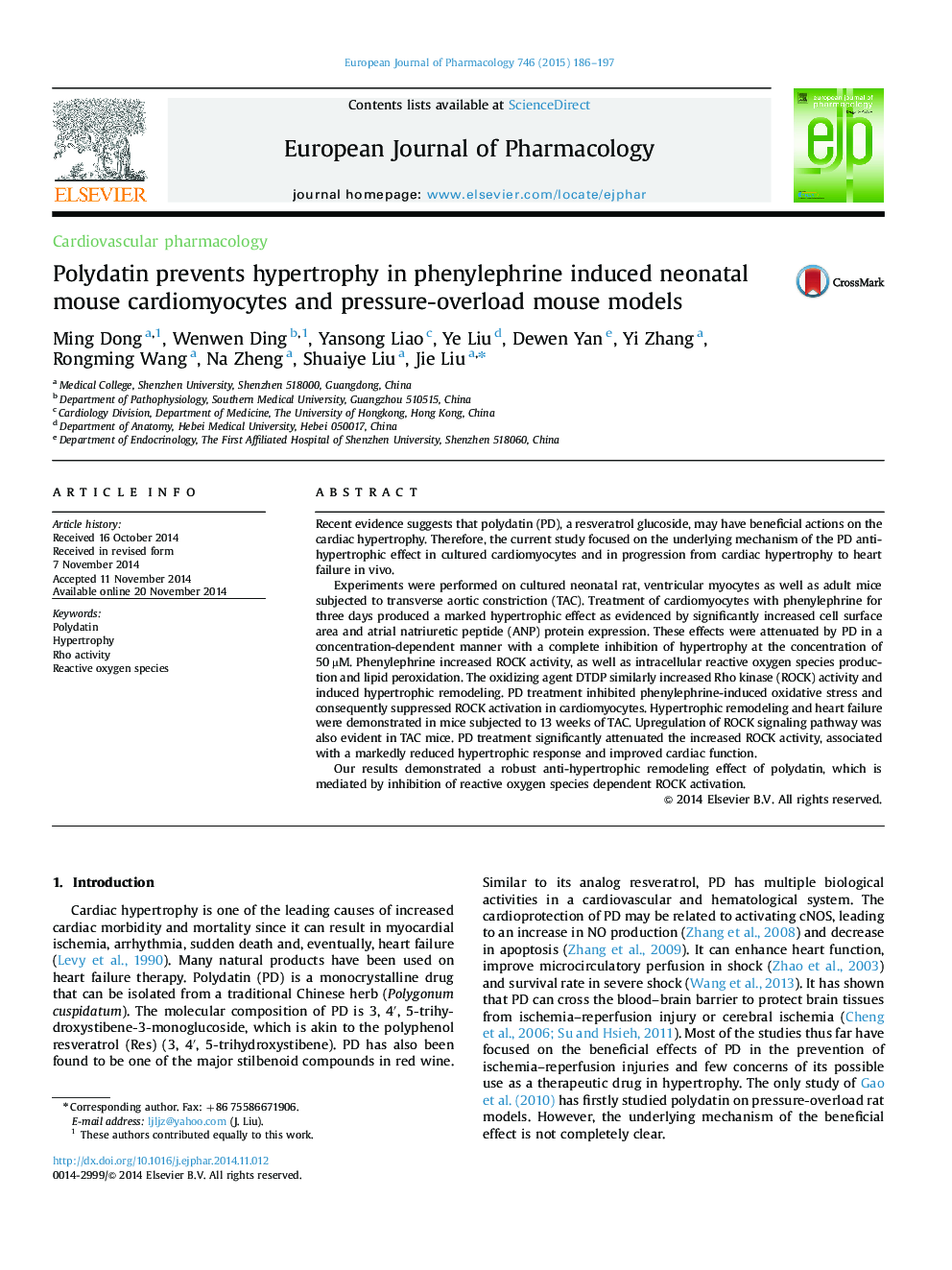| Article ID | Journal | Published Year | Pages | File Type |
|---|---|---|---|---|
| 2531576 | European Journal of Pharmacology | 2015 | 12 Pages |
Recent evidence suggests that polydatin (PD), a resveratrol glucoside, may have beneficial actions on the cardiac hypertrophy. Therefore, the current study focused on the underlying mechanism of the PD anti-hypertrophic effect in cultured cardiomyocytes and in progression from cardiac hypertrophy to heart failure in vivo.Experiments were performed on cultured neonatal rat, ventricular myocytes as well as adult mice subjected to transverse aortic constriction (TAC). Treatment of cardiomyocytes with phenylephrine for three days produced a marked hypertrophic effect as evidenced by significantly increased cell surface area and atrial natriuretic peptide (ANP) protein expression. These effects were attenuated by PD in a concentration-dependent manner with a complete inhibition of hypertrophy at the concentration of 50 µM. Phenylephrine increased ROCK activity, as well as intracellular reactive oxygen species production and lipid peroxidation. The oxidizing agent DTDP similarly increased Rho kinase (ROCK) activity and induced hypertrophic remodeling. PD treatment inhibited phenylephrine-induced oxidative stress and consequently suppressed ROCK activation in cardiomyocytes. Hypertrophic remodeling and heart failure were demonstrated in mice subjected to 13 weeks of TAC. Upregulation of ROCK signaling pathway was also evident in TAC mice. PD treatment significantly attenuated the increased ROCK activity, associated with a markedly reduced hypertrophic response and improved cardiac function.Our results demonstrated a robust anti-hypertrophic remodeling effect of polydatin, which is mediated by inhibition of reactive oxygen species dependent ROCK activation.
Graphical abstractFigure optionsDownload full-size imageDownload high-quality image (52 K)Download as PowerPoint slide
